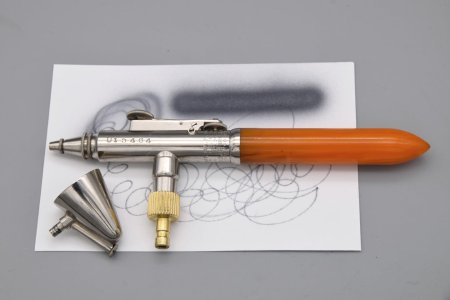DaveG
Airbush Analyst
I love the Model U. I have several which encompass some of the development and growth of not just the model, or brand, but theory of the airbrush as a whole (head designs changed and developed over a couple of decades landing on what we still see today). It was a fantastic time in American airbrush development. I think because they were so different, even visually, people were hesitant to give them a chance. Keep in mind, at this time period and airbrush could cost as much as a months rent. Advertising moved at a snails pace compared to today's vial markets, so they perhaps never really got a fair shake.Those U type wolds look fascinating, i am intrigued by these designs when people were trying new things when the airbrush was young, its similar with most things, for example the early days of the internal combustion engine saw some wonderful and unique designs before everyone began to settle on a standard sumilar design.

